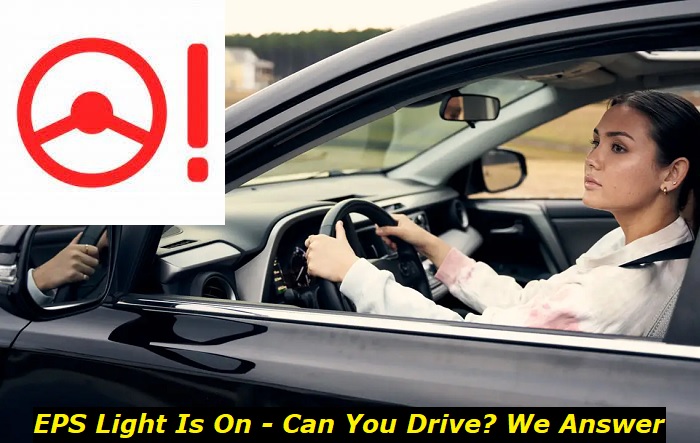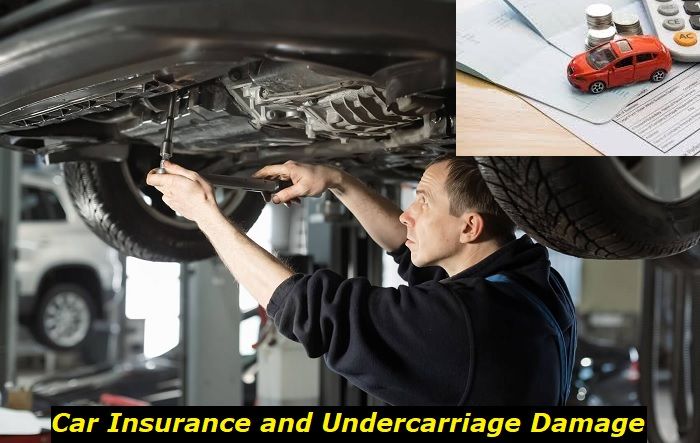The electric power steering (EPS) light of your car typically comes on when you put the ignition key in the "on" position. It will then go off when the engine is started. But you should be concerned if the EPS light stays on after that. It might be evidence of a problem that needs immediate attention.
EPS warning light highlights
- Common reasons:electronic power steering issues, software glitch
- How to fix:read the codes, disconnect the battery for some time, check the battery and alternator
- Possible consequences:power steering may not be available
- Priority level:High
- Can you drive?Very carefully
- DIY repair:Impossible
- Repair price range:$200-$850

How the EPS System Works
As stated earlier, it will be hard to turn when the electric power steering fails. It may even be impossible to move the EPS in some cases. The system's power-assist feature is supposed to allow you to turn with minimal effort while driving.
An EPS system doesn't require fluid to work like a hydraulic power steering (HPS) system. The former is generally quieter than the latter.
The EPS Warning Light
This alert is represented by a steering wheel symbol which may have an exclamation mark beside it. The symbol illuminates red, orange, or yellow. A red EPS light indicates that the issue is severe, while a yellow one means that it's a minor problem.
Still, you shouldn't take any issue for granted because a minor problem can have ripple effects. It can lead to serious complications, especially for related/connected parts to the source of the problem.
Reasons the EPS Light Stays On
Your car's EPS light may come on for no reason and go off by itself after you turn off the vehicle. In other cases, the EPS system may fail without the light coming on. Just hope you don't experience such confusing situations. I've compiled many potential causes of the EPS illuminating below.
Common Triggers for the EPS Light
- Electric motor issues - Overheating, contaminants (e.g. dirt), moisture, etc.
- Disengagement of the steering wheel from the electric motor - Corrosion, collision, water/moisture, wear, etc.
- Rack and/or pinion steering developing mechanical problems.
- Damaged power steering - From over-speeding on bumpy/rough roads.
- EPS controller or sensor faults causing poor vehicle control - For example, a defective or wrongly installed steering angle sensor.
- EPS software error as a result of bugs and glitches.
- Outdated EPS software.
- Bad/blown power steering fuse.
- Aging of the EPS system.
- Wire connection issues/bad wire - Burning, corrosion, etc.
- Battery fault causing low voltage for the power steering - Short circuits, bad wires, faulty terminals, wear, etc.
- Low tire pressure - Making the steering control mismatch the tire's speed.
Special Driving Conditions That Can Make the EPS Light Come On
Various rare circumstances can make the EPS light come on apart from the ones mentioned in the previous section. They're specific technical conditions that involve certain combinations (and timing) of the following:
- Engine RPM
- Vehicle speed
- Braking actions
- Steering wheel rotation
Best Fixes for the EPS Light Staying On
It's always best not to drive once you notice that the electric power steering light is still on after starting your car. Try not to panic if the EPS fails or your steering becomes stiff while driving. You should also avoid making unnecessary turns unless it's needed for parking the vehicle safely. Now, perform the restart procedure below.
1) Restart Your Car To Reset the EPS System (Quick Fix)
Step 1: Park Your Car Safely and Turn It Off
Step 2: Let About 60 Seconds Pass before step 3.
Step 3: Restart Your Car
See if the EPS system will come back to normal. The light shouldn't stay on like before either. You'll know the steps were unsuccessful if the steering is still not turning smoothly and/or if the warning light is still on.
Step 4: Note the Initial Circumstances
Try to remember the circumstances surrounding the triggering of the warning light or the beginning of the EPS malfunction. For example; the vehicle speed, engine RPM, steering wheel turning, braking action, etc. You'll need to tell your mechanic everything you can.
The EPS may reset itself after you wait, but that doesn't mean you shouldn't proceed to diagnose the vehicle for error codes. Utilize an OB2 scanner that suits your car for this. Don't drive the vehicle! Rather, you can try the other approaches in subsequent sections.
2) Troubleshoot the Steering
This is done to rule out any mechanical fault in the steering. Note that the steering can sustain damage when you drive recklessly or hit speed bumps at high speed.
Step 1: Disconnect the EPS Controller Unit
You'll find the controller module at the back of the kick panel area on the passenger side, depending on the car's make and model.
Step 2: Drive with the Mechanical System Only
Observe if the steering wheel is pulling sideways as you drive. If so, it means there's a mechanical fault.
Step 3: Lift the Vehicle for a Proper Examination
You'll be able to have full access to the steering unit this way. It's advisable to take your car to an auto repair shop for this to be performed. But you can go DIY if you're lucky to have a lift or ramp in your garage (plus adequate technical knowledge).
EPS steering racks are difficult to reach in some vehicle models. The subframe has to be removed for the damage to be seen.
You should get suspicious about possible damage to the steering and pinion if you experience rough steering or notice a strange sound. It's most likely to occur when turning your car.
A front-end collision is enough reason to troubleshoot the steering for inconspicuous faults. The need for a steering position calibration, steering wheel counter swap, or other mechanical fixes may come up.
3) Remove the Error Code Related To the EPS Fault
You can't delete codes that have been stored just by unplugging your car's battery. The code will remain stored even after the ignition and EPS have been switched off. In other words, you can't clear the codes simply by turning off the vehicle or depriving it of power.
Following the steps below may help you to clear the code without a scan tool, depending on your car model. Be prepared for quick follow-up actions as you perform the procedure.
Step 1: Ensure that the steering wheel is in its straight position.
Step 2: Turn the steering wheel to the left by 45 degrees.
Step 3: Set the ignition to the "on" position. This should make the EPS light illuminate for a few seconds and go off
Step 4: Turn the steering wheel back to its straight position immediately after the EPS light goes off. This should make the light illuminate again.
Step 5: Rotate the steering wheel to the left by 45 degrees immediately after the light comes on again. Let a few seconds pass for the light to go off.
Step 6: Turn the steering wheel back to its straight position immediately after the light goes off. The light should flash two times after a few seconds as proof that the process was effective. But you'll have to get a compatible diagnostic scanner to clear the DTCs if there was no blinking.
4) Other Fixes for the EPS Alert
Fix for an EPS Software Error
Update and restart the EPS System by doing the following:
Step 1: Put the vehicle off.
Step 2: Remove the car key from the ignition.
Step 3: Wait for at least ten seconds.
Step 4: Re-insert the key into the ignition and start the car.
Step 5: Drive the car until the EPS light disappears. It should only take a short distance.
Fix for Other Faulty Components
Check the vehicle owner's manual for the location of inconspicuous components that are related to the power steering. For example; the fuse. It's always best to get such parts replaced rather than trying to repair them. Some are difficult to repair, while others must be changed.
Conclusion
Driving with the EPS light on poses a great risk to you and other road users or pedestrians. And the problem will most likely get worse-meaning that you may incur avoidable expenses.
EPS systems usually feature many components, so you have to check each of those parts diligently till you find the culprit. The best thing is to take the vehicle to an auto repair shop for such a tedious process. It's not advisable to go DIY for such a complex assessment without the technical know-how.
About the authors
The CarAraC research team is composed of seasoned auto mechanics and automotive industry professionals, including individuals with advanced degrees and certifications in their field. Our team members boast prestigious credentials, reflecting their extensive knowledge and skills. These qualifications include: IMI: Institute of the Motor Industry, ASE-Certified Master Automobile Technicians; Coventry University, Graduate of MA in Automotive Journalism; Politecnico di Torino, Italy, MS Automotive Engineering; Ss. Cyril and Methodius University in Skopje, Mechanical University in Skopje; TOC Automotive College; DHA Suffa University, Department of Mechanical Engineering






Add comment